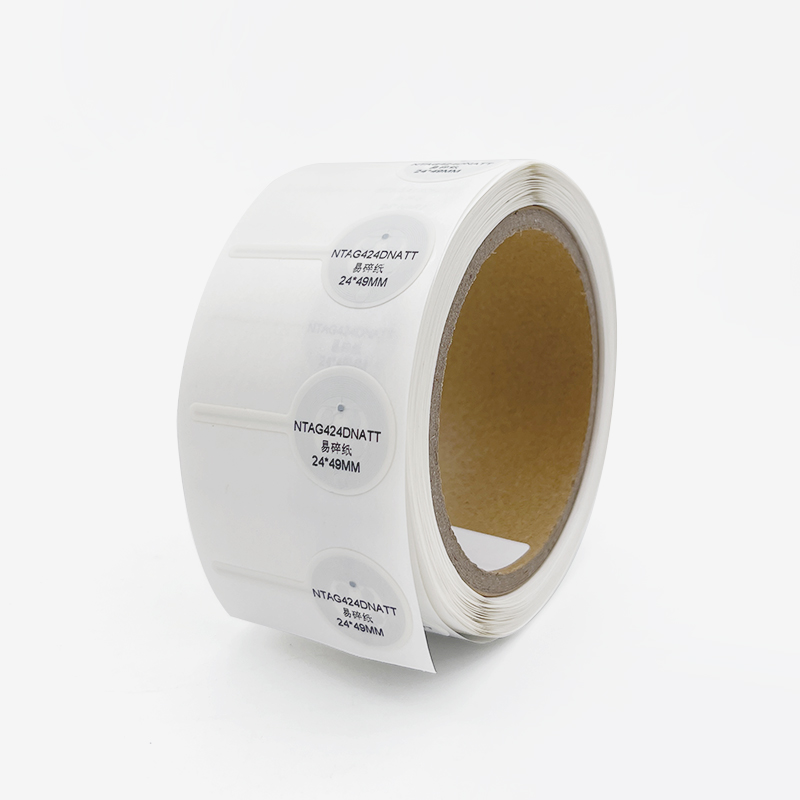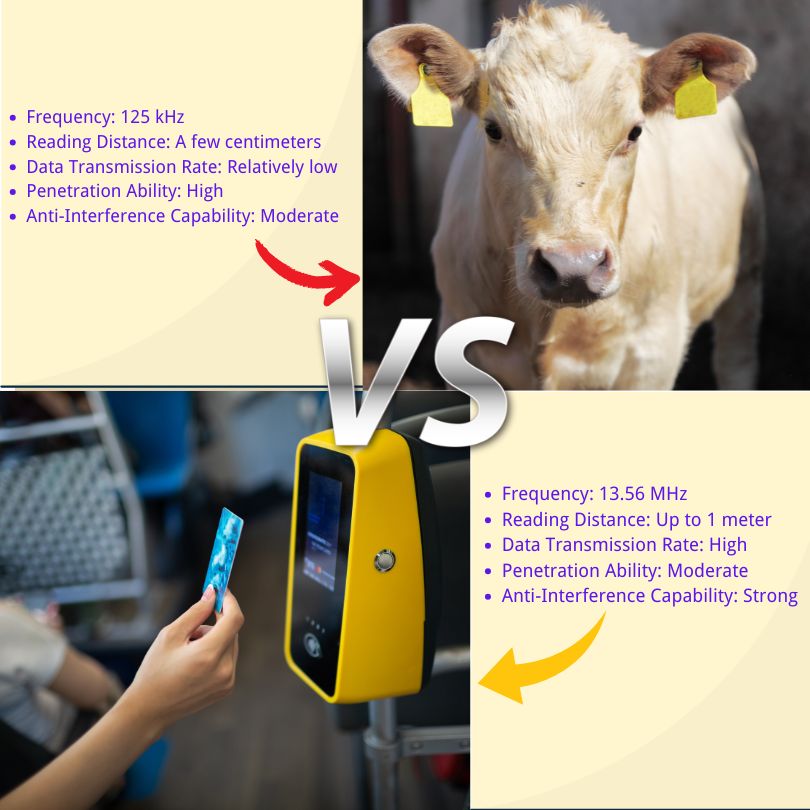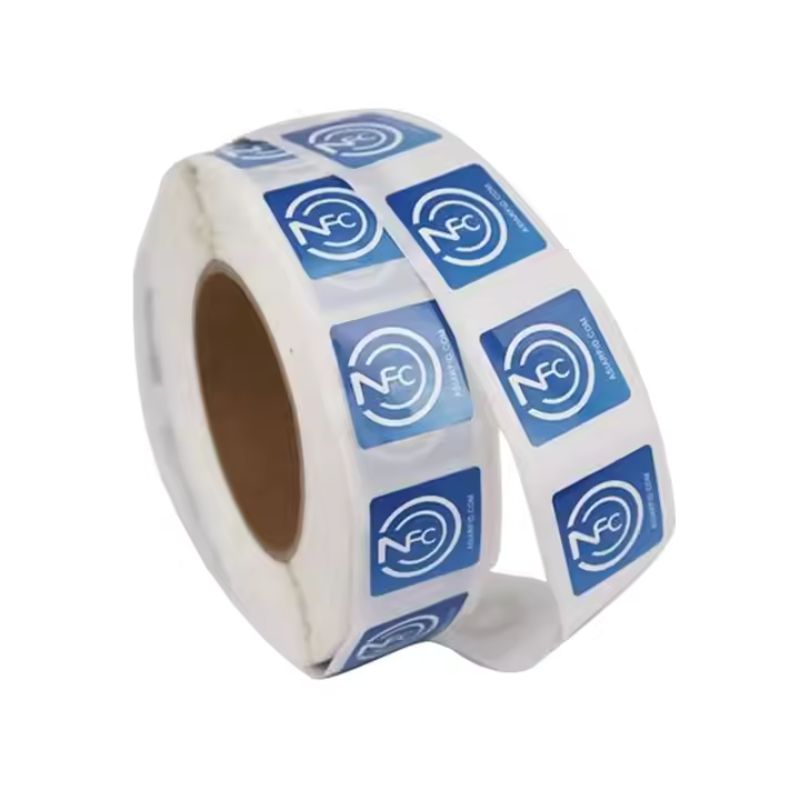
Understanding the Differences Between 13.56 MHz and 125 kHz RFID Tags
Table of Contents
Understanding the Differences Between 13.56 MHz and 125 kHz RFID Tags

What RFID Frequency Really Means (LF vs HF)
RFID systems use radio waves to communicate between tags and readers. The frequency they use affects how far they can read, how fast they send data, how they behave around metal or water, and what kind of data they can store.
Here’s the core idea:
Low-Frequency (LF) = 125 kHz RFID Tags
- Short range
- Slower data rate
- Excellent performance near metal or liquids
- Simple, rugged, and affordable
High-Frequency (HF) = 13.56 MHz RFID Tags - Longer range
- Faster data rate
- More advanced security
- Compatible with NFC and smartphones
13.56 MHz vs. 125 kHz
| Feature | 13.56 MHz RFID Tags | 125 kHz RFID Tags |
|---|---|---|
| Frequency | 13.56 MHz (HF) | 125 kHz (LF) |
| Read Range | Up to 1 meter | 2–10 cm |
| Data Transfer Rate | High | Low |
| Performance Near Metal | Moderate | Strong |
| Security | Supports encryption, mutual authentication | Basic, usually no encryption |
| NFC / Smartphone Support | Yes | No |
| Cost | Higher | Lower |

Security: Is One Frequency Safer?
125 kHz RFID Tags are often used in older systems and typically use fixed unique IDs with no encryption. That makes them easy to clone with off-the-shelf devices. They’re okay for low-risk systems, but they don’t meet modern security standards.
13.56 MHz RFID Tags, especially MIFARE or DESFire cards, support:
- Encryption
- Mutual authentication
- Secure memory storage
- Multiple applications on a single card
Bottom line: - Stick with 125 kHz RFID Tags for low-security needs (like locker keys, time clocks).
- Choose 13.56 MHz for access control, payments, or any system storing personal data.
NFC and Smartphone Compatibility
If your project involves phones, 125 kHz RFID Tags won’t work.
Only 13.56 MHz RFID Tags support NFC (Near Field Communication)—the tech used in mobile payments, check-ins, and tap-to-pair features.
Most smartphones can read and write NFC tags using 13.56 MHz, making this frequency ideal for:
- Digital tickets
- Event check-ins
- Smart posters
- Loyalty cards
- Contactless mobile ID
If smartphone support matters, 13.56 MHz is your only choice.
Real-World Use Cases by Industry
| Industry / Application | 125 kHz RFID Tags | 13.56 MHz RFID Tags |
|---|---|---|
| Access Control | Basic entry systems, legacy doors | Secure credentials, modern ID badges |
| Public Transport / Ticketing | Not supported | MIFARE/NFC-based fare cards |
| Animal Tracking | Widely used due to tissue penetration | Rare |
| Industrial Automation | Reliable near metal/liquid, rugged use | Less common in harsh environments |
| Healthcare | Not ideal for patient or medication tracking | Better for secure ID and asset tagging |
| Libraries / Archives | Rare | Popular for book tracking and checkouts |
| Marketing / Events | Not applicable | Smart posters, NFC event passes |
| Vehicle Anti-Theft | Embedded 125 kHz RFID Tags in keys/ignitions | Not used |

How to Choose Between 13.56 MHz and 125 kHz for Your Project
Use this checklist to narrow down your decision:
1. Security Level
- Need encryption or secure access? → Go with 13.56 MHz
- Low-risk tracking or basic ID? → 125 kHz may be enough.
2. Environment
- High interference, metal, or liquid nearby? → 125 kHz works better
- Clean office or indoor space? → Either works; choose based on features.
3. Smartphone Integration
- Want users to scan with phones? → Only 13.56 MHz supports this
4. Budget
- 125 kHz tags are cheaper upfront
- But 13.56 MHz offers more long-term value if you need features or security.
Still Using 125 kHz RFID Tags? Upgrade or Stay?
125 kHz RFID Tags are still widely used in:
- Legacy access control systems
- Factory floor operations
- Livestock tagging
- Auto anti-theft systems
But if you’re managing: - Staff credentials
- Payment systems
- Multi-use ID cards
- NFC integration
…then it might be time to switch.
Upgrade Paths:
- Install dual-frequency readers
- Issue combo cards (support both 13.56 MHz and 125 kHz)
- Gradual rollout: support both systems during migration
FAQs About 13.56 MHz vs 125 kHz RFID
Is 13.56 MHz the same as NFC?
Yes, NFC is a type of 13.56 MHz RFID. Most smartphones support it.
Can one reader read both frequencies?
Not usually. You’ll need a dual-technology reader to handle both.
Which tag has longer range?
13.56 MHz generally has a longer read range (up to 1 meter). 125 kHz is limited to a few centimeters.
Which should I use for access control?
For modern, secure access systems, 13.56 MHz is strongly recommended.
Why do 13.56 MHz and 125 kHz RFID tags have different reading distances?
The difference in reading distances is primarily due to the operating frequency. Higher frequencies like 13.56 MHz have a greater range, while lower frequencies like 125 kHz are optimized for shorter distances.
Which RFID tag is more suitable for metal or liquid environments?
125 kHz RFID tags are more effective in environments with metals or liquids due to their superior penetration abilities.
Does the cost of RFID tags impact the choice?
Yes, 125 kHz RFID tags are generally more cost-effective, making them a suitable option for budget-conscious applications. However, the choice should also consider performance requirements and application environments.
Key Standards and Chip Types
13.56 MHz (HF)
- ISO/IEC 14443: Used in contactless cards (MIFARE, DESFire)
- ISO/IEC 15693: Longer range, used in libraries, logistics
- ISO 18000-3: Item-level tracking
125 kHz (LF)
- Proprietary formats, often fixed-ID (e.g., EM4100, HID Prox)
- Mostly used in older systems and basic applications
Final Takeaways
If you’re still wondering which way to go, here’s the summary:
Use 125 kHz RFID Tags for:
- Harsh conditions (metal/liquid)
- Low-security applications
- Budget-conscious deployments
- Legacy systems
Use 13.56 MHz RFID Tags for:
- Mobile/NFC support
- Secure access and payment
- Multi-use cards
- Future-ready systems
Both have a place—but you should pick based on use case, not just cost or habit.
Comments
Hot Products

RFID in Logistics: How to Eliminate RFID Misrouting and RFID Label Failures
RFID in logistics is more than just a tool to speed up processes. It has become a key part of how modern supply chains operate.

What Is RFID Waste Management
Imagine a city where every trash bin speaks — not literally — but through a tiny chip that tells the system when it’s full, when it’s emptied, and where it went. That’s what RFID waste management is doing today.

What are Bolt Seals and their Applications? | Complete Guide
In global trade and logistics, bolt seals play a crucial role in ensuring cargo security and compliance. These small but powerful devices are designed to lock shipping containers, trailers, and cargo doors with a tamper-evident mechanism.

What is an RFID Card Protector? Benefits, Use Cases, and Buying Guide
RFID technology (Radio Frequency Identification) is everywhere: in your credit cards, ID badges, transit passes, hotel room keys, and more. It offers speed and convenience, but it also opens the door to a new kind of digital theft called “skimming.” That’s where an RFID card protector comes in.

RFID Wristbands for Events: Bulk Buying Guide for Organizers
RFID wristbands for events are becoming the go-to solution for organizers who need faster entry, fraud prevention, and cashless payments at concerts, festivals, and sports venues. Unlike paper tickets or QR codes, these smart wristbands use embedded chips to streamline access, secure transactions, and improve the guest experience.

How RFID Tag on Windscreen Improves Vehicle Access Control and Toll Systems
In today’s fast-paced world, vehicle identification needs to be quick, secure, and contactless. An RFID Tag on the Windscreen provides exactly that — a reliable way to manage toll collection, parking, and gated access without stopping vehicles.
Tags
RELATED BLOGS

RFID in Logistics: How to Eliminate RFID Misrouting and RFID Label Failures
RFID in logistics is more than just a tool to speed up processes. It has become a key part of how modern supply chains operate.

What Is RFID Waste Management
Imagine a city where every trash bin speaks — not literally — but through a tiny chip that tells the system when it’s full, when it’s emptied, and where it went. That’s what RFID waste management is doing today.

What are Bolt Seals and their Applications? | Complete Guide
In global trade and logistics, bolt seals play a crucial role in ensuring cargo security and compliance. These small but powerful devices are designed to lock shipping containers, trailers, and cargo doors with a tamper-evident mechanism.




